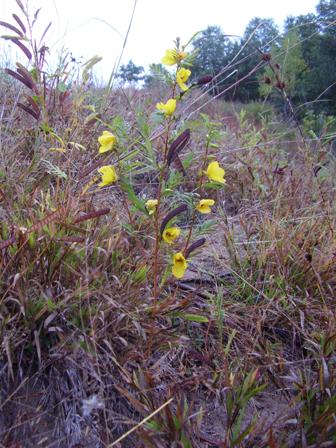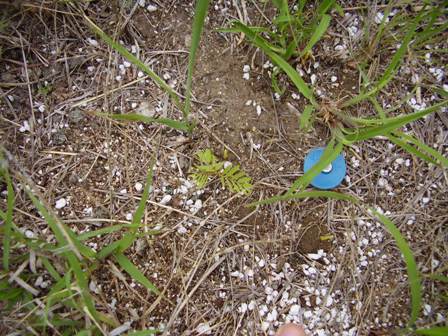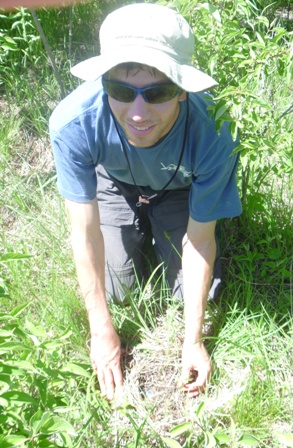Publications
My publication information and metrics can be found on my Google Scholar profile. I'm happy to supply a copy of any papers that you are unable to access if you send me an email.
Adaptation to climate in a temperate ant species
As part of an NSF Dimensions of Biodiversity grant, I am working with Drs. Sara Helms Cahan and Nick Gotelli at UVM to study genetic variation in gene expression of the temperate ant Aphaenogaster in relation to climate. We are generating the transcriptome for this species, and will use this as a database to examine changes in gene expression across the range of this species* from Florida to Maine. We will interpret the results of this project in the context of ecologcical field data from the "Warm Ants" project examining changes in ant species composition and abundance in response to warming at Harvard and Duke Forests.
* Part of the project will involve population genetic work to figure out what exactly is a species in this highly diverse ant genus.
Genetic basis of legume - rhizobia interactions
Mutualisms are one of the more remarkable aspects of ecological communities because two completely unrelated individuals cooperate for each other’s benefit. However, considerable variation has been found in many mutualisms, with some individuals providing large benefits to their partner while others provide little or no benefit. Understanding the genetic basis of this phenotypic variation is a fundamental goal in legume-rhizobia research. This work is of applied importance because legumes are agriculturally important for their ability to acquire nitrogen from rhizobia
In a postdoctoral position at the University of Minnesota with Drs. Peter Tiffin and Nevin Young, I performed a genome-wide association (GWA) study using whole-genome resequencing data to characterize the genetic basis of the mutualism between M. truncatula and rhizobia. In this study, I identified genes previously found through forward genetic screens and several others that are candidates underlying naturally occurring variation in nodulation (Stanton-Geddes et al. 2013.
While GWA can identify causative genes, genomic data can also be used for estimating heritability in the absence of known-relatedness among individuals. I evaluated this method with our GWA data by comparing heritability estimated from replication of accessions in common conditions to marker-derived estimates from genomic prediction. I found that only a fraction of SNPs in the whole-genome data need to genotyped, but that the number of accessions needs to be high for accurate marker-based estimates of heritability. These results suggest that reduced-representation sequencing approaches (e.g. RAD-tags) offer promise for estimating the adaptive potential of wild populations that are not amenable to long-term monitoring or controlled crosses.
Mutualisms and species' range expansion
From my PhD work (see below), I found that the availability of suitable mutualists may be limited for the legume Chamaecrista fasciculata. I am currently exploring the extent to which this mutualism has evolved among species in the genus Chamaecrista and the reciprocal influence the symbiosis may have had on each species distribution.
Evolution and ecology of species' range limits

Species’ range limits are determined by a combination of historical, ecological and genetic processes, but understanding the relative role of these processes in limiting any single species’ range has been elusive. The naive expectation is that with future climate change, species will track the climatic conditions to which they are currently adapted. However, this ignores the biotic component of species distributions, as migrants will have to establish in communities consisting of novel abiotic and biotic conditions.
For this work, I used the widespread native annual legume Chamaecrista fasciculata. Both abiotic and biotic factors are hypothesized to reduce individual fitness below replacement beyond the range edge, but few studies have performed the transplant experiments necessary to demonstrate that species range edges are limited by these factors. Further, the relative importance of abiotic and biotic factors is likely to differ across different range edges. To examine the role of these factors in setting range limits, I established transplant experiments beyond C. fasciculata's northern and western range edges and manipulated the presence of neighbors.

This experiment revealed that fitness was reduced below replacement beyond both range edges, even in the absence of competition (Stanton-Geddes et al, 2012). Further, I tested for the both the abundance and effect of rhizobia (soil-dwelling microbes that fix nitrogen in exchange for carbon) within, at and beyond the range edge. I found that compatible rhizobia are nearly absent beyond the range edge, and that plant fitness is reduced without rhizobia present (Stanton-Geddes & Anderson, 2011). To my knowledge, this was the first demonstration that the disruption of a mutualism could potentially limit species’ range expansion in a continuous environment.
The ecological factors associated with a decrease in fitness beyond the range edge are proximate explanations. The ultimate causes of range limits are the genetic factors that prevent adaptation to conditions beyond the range edge. A commonly cited hypothesis is that gene flow from interior population consistently introduces alleles that are maladaptive at the range edge. I tested this hypothesis by sequencing nine loci in 68 individuals from four populations at different geographic range locations. My results show that populations at different range locations are highly diverged, with little indication of high levels of gene flow between populations. Overall, this work indicates that the range of C. fasciculata is not limited by dispersal or gene flow, but by the joint effects of other ecological (e.g. mutualists) and genetic factors.

